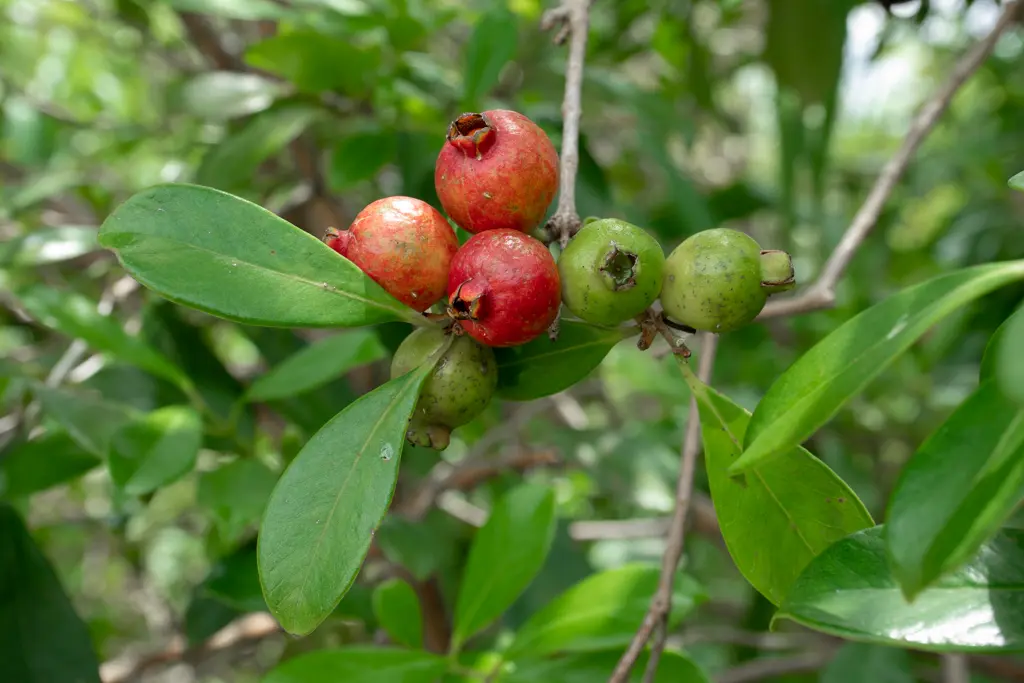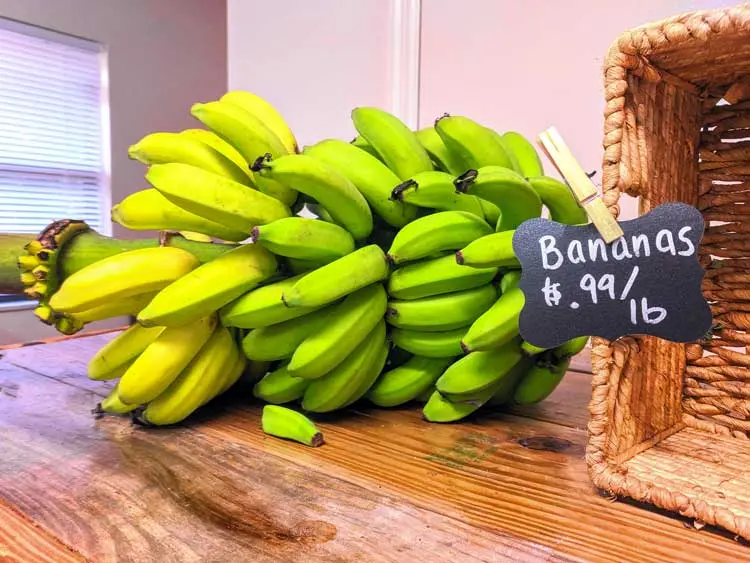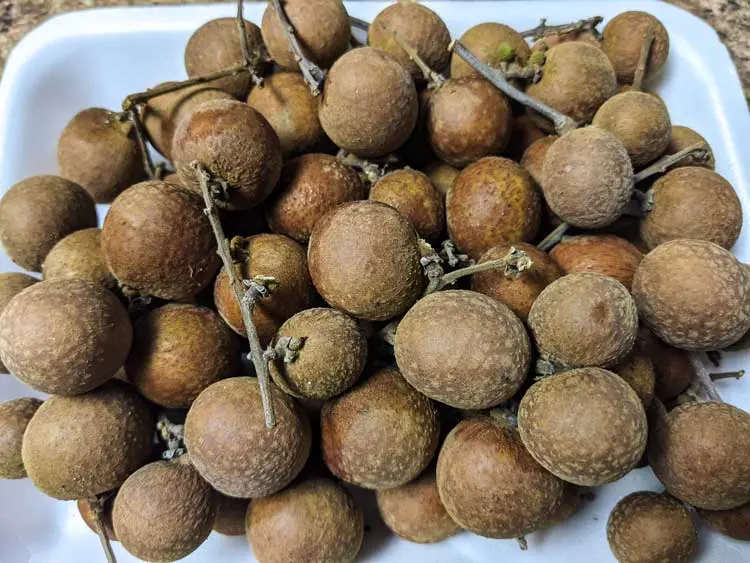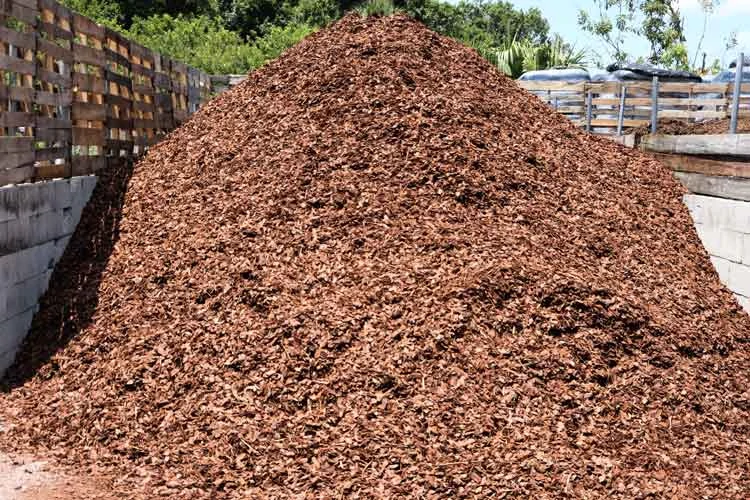by Amanda Rose Newton
One of the joys of living in Florida is being one of the areas (and sometimes the only) in the US where you can grow many of the exotic fruits from the grocery store in your own backyard.

Guavas, bananas, papayas, and longans may be drastically different in appearance and taste, but they all have similar growth requirements due to their shared tropical heritage.
Tropical fruit month is only 4 short weeks and not every fruit has an opportunity to have one of its own. For this final installment, we are celebrating the four fruits above as honorable mentions and worthy additions to your edible garden.
The Goodness of Guava
Guava is native to Central and South America and has been grown in Florida for centuries. Due to its invasive tendency, you can often see it growing alongside roadways. For this reason, it is important to choose the right place to plant it where it can be easily controlled.
An excellent choice for those looking for a smaller tree, it maxes out around 20 feet tall. The gray/green bark and large leaves make for an attractive specimen tree and the tasty fruit is an added bonus. Here in Florida, fruit is either pink/red or white, with the latter being consumed before ripening.
Guava Varieties:
Barbie Pink– Pink fruit that is sweet-tart
Homestead- Pink fruit that is very sweet
Lotus- White fruit that is crunchy and sweet
Crystal- White fruit that is mildly sweet and crunchy
Banana Bonanza
Though often referred to as trees, bananas are in reality just really tall herbaceous plants that die after producing a spectacular cluster of fruit. Their tropical foliage, vigorous growth, and hearty fruit production make them winners in just about any landscape setting.

There are hundreds of varieties worldwide with dozens to choose from here in Brevard.
Plantains are hybrids of bananas that are used for cooking, whereas bananas are sweet enough to enjoy out of hand. Bananas grow from underground stems (rhizomes) and will produce babies or “pups” through suckers. Once you plant one banana, you will be gifted with more for years to come.
Popular Banana Varieties:
Dwarf Cavendish- Close to the grocery store banana in a compact plant size (5-8 ft), sweet and tasty!
Giant Plantain- Delicious cooking banana
Goldfinger– Citrus-tinged flavor, smaller size and creamy texture.
Ice Cream– Bright white creamy flesh similar in texture to rich vanilla ice cream. Also called “blue java” due to the blue tinge the peel takes on while ripening.
Ladyfinger– Small in size, big on creamy taste!
Praying hands– Grown for its unusual fused “hands” of banana clusters that resemble praying stance. Sweet and fragrant fruit.
Papaya Perfection
Papaya is one of the easiest tropical fruits to start in your Florida landscape. Like the banana, it is also not a true tree despite getting quite tall.
Native to Central America, it has been grown in Florida for centuries. Like the guava, it can spread fast so placing it in a desirable location is key. Plants can be just male, female, or both, with fruit coming from female and bisexual flowers only.
The fruit, like the guava and banana, are botanically berries and offer numerous seeds that can easily be replanted. While there are numerous species throughout the tropics, only a handful are grown in Florida.
Papaya Varieties:
Red Lady– The most common variety you will find. Large fruit size with orange/red flesh and many seeds.
Maradol– Peach-colored fruit, tasty, and nutrient-rich.
Long Live Longan!
With a family tree that includes lychee, there is much to love about this underrepresented favorite. Longans are native to Asia and were introduced to the USA in the 1900s, and are grown here as well as Hawaii.

With the dense coverage, the height of 40 ft. (record: over 100 ft.), and petite fruit clusters, longan is a landscape focal point.
Unlike the fruits above, the longan is a drupe like the avocado or mango, with a single seed present in the center. Squishy and sweet like lychee, its skin is smoother and thicker.
While there are numerous cultivars available, few are grown commercially or in the home landscape.
Common Varieties of Longan:
Kohala-The most common cultivar, reliable and tasty
Ponyai- Created in Florida, larger fruit size
Kay Sweeny- Florida created, medium-size fruit
Biew Kiew- Thailand variety, small but tasty
Caring for Tropical Fruit Trees in Florida
Given their tropical persuasion, all species listed above need adequate sunlight in order to bear fruit.
Luckily, all will do well in our sandy soil, but do keep in mind that tolerance varies with salinity.
Most species benefit from fertilization of choice, usually recommended for the first year of growth. Use your best judgment when assessing water needs. Once established, trees should only need irrigation once or twice a week when it doesn’t rain.
Pests and Diseases
Unfortunately, fruit trees are susceptible to many fungi and pest-related issues!
Be sure to monitor your plants regularly and bring in any questionable coloration, spotting, or damage (in a sealed container) to the info team for identification.
While the fruit is ripening, it is not a bad idea to bag it to help prevent papaya and guava flies or fruit flies from laying eggs inside the fruit. This is also a great bird deterrent!
Mulching and Pruning
Mulch is recommended around fruit trees in a home landscape as it helps to retain moisture, reduce weeds, and provide less room for insects to overwinter in the soil below.

As for trimming your tropical fruit trees, bananas and papayas can benefit from old leaf removal but the terminal stem should be left alone.
Guavas and longans benefit from fruit thinning in order to keep production strong. Both are rarely pruned for aesthetic purposes.
The fruits above are nutritious, delicious, and great additions to your landscape and table. Be sure to stop by and see what’s available at the farmer’s market and check out Seth’s how-to videos to get your fill before tropical fruit month comes to a close.


